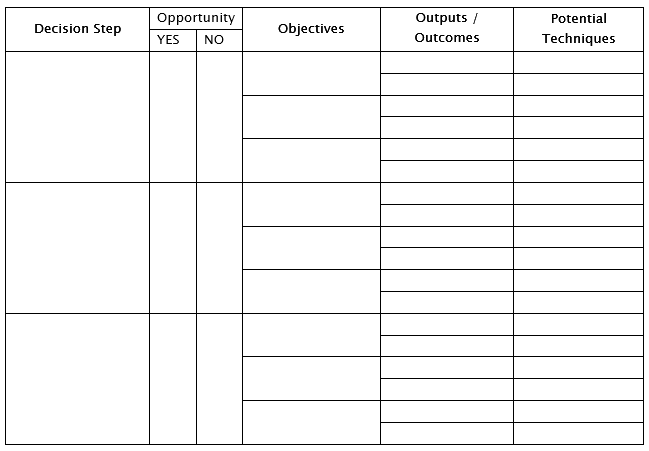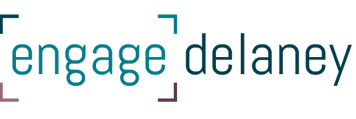What are Engagement Objectives?
We get asked lots of great questions during the course of an IAP2 training session. One that I hear frequently during training sessions and in follow-up conversations, is: “What are engagement objectives, and how do they relate to engagement design?”
Engagement objectives are essential – not only to getting the design right, but also to integrating engagement into the decision process, which is a litmus test for authentic engagement.
One of our core principles at Engage Delaney is “create brilliant process, beginning with the end in mind”. This relates to engagement objectives. Before choosing our engagement techniques, and creating detailed (annotated) agendas for engagement events, we first articulate what we are planning to achieve.
I find it helpful to think about engagement objectives as “success statements”. Objectives are statements of intention that help identify realistic targets and desired outcomes.
At D+A, we include four elements in each engagement objective:
- At what level on the spectrum?
- Who is being engaged?
- For what purpose?
- By what time?
For example, if our engagement works out the way we intend: “By late June 2017, we will have collaborated with community members to develop 2-4 alternate routes for the LRT, in order to bypass sensitive ecological features.”
Once we have mapped out the decision process (that is, the process by which the decision will be made: project completed, policy written, regulation developed, etc.), we can identify engagement opportunities. Engagement opportunities are those parts of the decision, or steps towards making that decision, that could be improved by working with stakeholder groups and/or the community at large.
For each engagement opportunity, we then identify several engagement objectives. We can think about two categories, or types of objectives. The first type involves work that is done by, or with, stakeholders and the community to contribute to the decision process, such as developing lists, priorities, options or alternatives. These types of objectives typically are referred to as engagement outputs. The other type of objective involves achieving a changed state, such as increased trust, new or deeper relationships, and clear and common understanding. These types of objectives typically are referred to as engagement outcomes.
Once we have clearly articulated what we want to achieve through our engagement process – our objectives – we can get to work selecting techniques and designing an engagement process that will generate these results. From the example outlined above, we know we are “collaborating”, and we know we want to generate a series of outputs that are routing alternatives for the pipeline.
Looking through the IAP2 toolkit, or reflecting on what works well for linear-type developments, I would consider techniques like charrette, photo voice, study circle, workshop and future search. I then would select the technique, or series of techniques, that would work best considering the resources, timelines, cultural aspects and regulatory framework within which we are working. I’ve sketched out a planning matrix that could be used to guide this creative design process.

Expand the table as necessary to accommodate all steps in the decision process.



